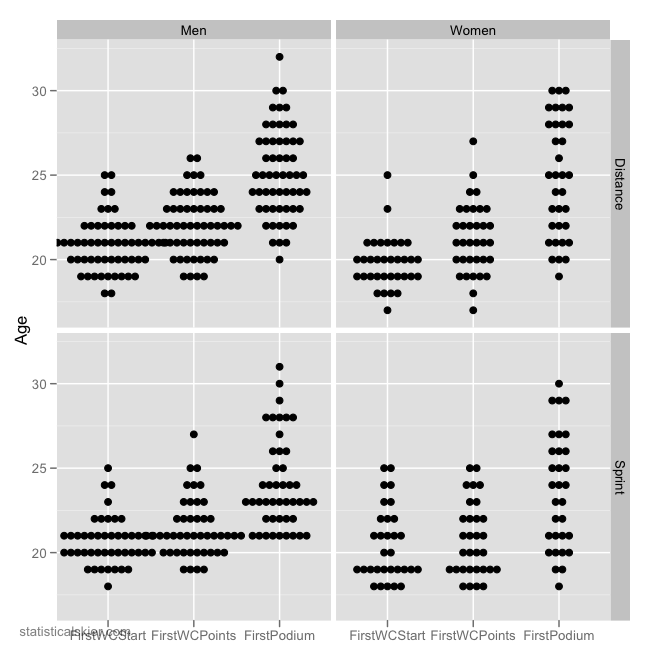I happened to be thinking about visualizations of athlete development recently, and in the process cooked up the following graph:
What I’ve done here is to take the podium finishers in major international events for the past five seasons and recorded each person’s age when they received their first (individual) WC/OWG/WSC start, when they scored their first WC/OWG/WSC points (i.e. a top thirty at any of those events), and finally when they first landed on the podium.
The style of graph here is sort of a more informative type of boxplot. Boxplots really only show you five values, so there’s a lot of lost information. Here, each dot represents a single athlete, so we can get a sense of the entire distribution of ages for each event.
As expected, the women’s ages tend to be somewhat lower across the board; this could be development related, but I tend to ascribe it as much to differences in field depth or competitiveness. The basic story is roughly the same in each of the four panels: rarely do future podium skiers get their first “major” start after the age of 23, they finish in the top 30 after at most a year or two, and then finish in the top three maybe another 2-3 years later.
Of course, that’s what happens with the “average” skier, which doesn’t exist. We are all our own unique snowflake. So this is still masking a fair bit of variability (that I’ll delve into a bit more on Thursday). But the basic lesson I draw from this is that if there’s a threshold to be seen here, it’s at the age of 25. The best skiers seem to have established at least the potential for scoring World Cup points before the age of 25.

{ 1 } Trackback
[…] does not follow that it is “OK” to be slow in your early 20′s. I’ve written numerous posts on this, but I’ll say it all […]
Post a Comment